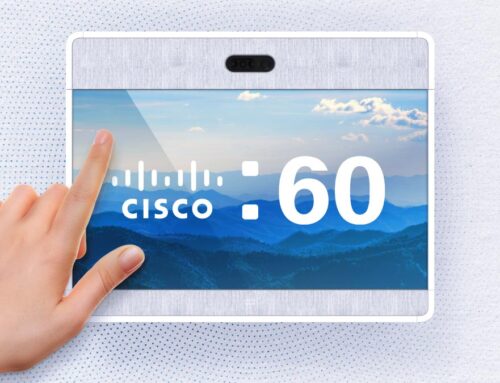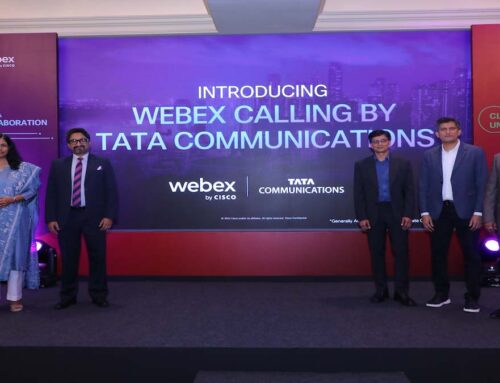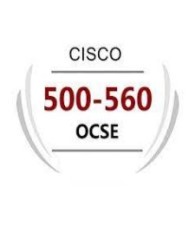Cisco takes bold steps towards more efficient energy management of data centers, IoT systems, and buildings. More RSS Feeds: https://newsroom.cisco.com/c/r/newsroom/en/us/rss-feeds.html
Cisco takes bold steps towards more efficient energy management of data centers, IoT systems, and buildings. More RSS Feeds: https://newsroom.cisco.com/c/r/newsroom/en/us/rss-feeds.html Read More Cisco Newsroom: Collaboration
As Cisco CEO Chuck Robbins stresses, “operating sustainably and equitably is the only way to do business.”
But to operate sustainably demands constant commitment — from raising awareness to driving new innovation.
That’s why at Cisco Live U.S. 2023, the company highlighted its culture of advancing sustainability, along with some critical new product announcements. These reflected the company’s core purpose: powering an inclusive future for all. Sustainability is a key element of that purpose, for Cisco’s employees, its customers, and for the planet.
As Robbins announced in a Cisco Live keynote address this week in Las Vegas, sustainability is now among the company’s top five customer priorities. And this was reflected in last year’s elevation of sustainability to a senior leadership role, with Mary de Wysocki named the company’s first chief sustainability officer.
As for innovation around sustainability, there was no shortage of it at Cisco Live. One key focus area was energy management for data centers and beyond. Energy-hungry and heat-generating data-center servers and switches draw up to 2 percent of all electricity in the United States alone, and energy consumption can represent up to 30 percent of data center costs. So, optimizing energy usage should be a major concern for all forward-looking organizations.
Capturing insights into the functions and efficiency of those data centers is a critical first step. To that end, there are some important Cisco Live announcements centered around Nexus Dashboard and Webex Control Hub.
Cisco Nexus Dashboard is a powerfully intuitive interface for cloud and data-center networks. It already provides the essential visibility needed to monitor, optimize, and secure even complex networking environments. And moving forward, that visibility will extend to energy management across the Cisco Networking Cloud.
By integrating additional capabilities from Cisco API integration partners Panduit and Vertiv, Nexus Dashboard will supply a wide range of insights related to energy usage and sustainability. These will include real-time and historical insights into the energy consumption, energy costs, and greenhouse-gas emissions of Cisco Nexus switches and other IT equipment in the data center. It will also monitor the ambient temperature of data centers to help improve cooling efficiency, while keeping an eye on any additional servers, switches, storage, etc. that are connected to Panduit and Vertiv.
As a world-class collaboration platform, Webex connects hundreds of millions of users around the world. But like any such widely used tool, it creates its own impact on data-center energy demands. So, earlier this year Cisco announced that a new feature, Carbon Emission Insights, would be integrated into Webex Control Hub to monitor energy usage from Webex devices.
Now those insights will extend to the impact on data centers from Webex services like meetings, messaging, and video. With these new features, Sustainability Insights can expand an organization’s ability to meet their data-center sustainability goals by:
Estimating data-center carbon emissions based on energy consumption of Webex’s cloud-based services
Showing monthly trends for energy consumption, including emissions output and emissions savings.
Empowering organizations to improve their sustainability practices.
Nexus and Webex are just the beginning. Additional energy-management insights will soon be captured by other Cisco platforms, such as Intersight, Cisco’s IT operations platform delivered as a service. Intersight will soon offer expanded visibility into energy consumption across infrastructures, including compute nodes, servers, blades, racks, fabric interconnects, and chassis.
“Cisco sits at the unique intersection of sustainability and technology, empowering our customers to make informed technology choices,” said Denise Lee, vice president of Cisco’s Engineering Sustainability Office. “Across Cisco’s portfolio, we are designing solutions to bring energy management and circularity to smarter buildings, more sustainable data centers and a more sustainable internet for the future. Working with partners to create integrated ecosystems is a critical part of our roadmap and how we hope to accelerate the speed and scale to our collective journey towards Net Zero.”
An energy-efficient Internet of Things
The Internet of Things (IoT) is revolutionizing our visibility into and management of physical systems, everything from industrial robots and wind farms to water utilities and supply chains.
And it’s another area in which Cisco’s energy-management technologies can have an impact across a variety of industrial and operational settings.
One such solution is the Cisco IoT Operations Dashboard. It allows customers to securely access real-time insights from their equipment, even if that equipment resides in challenging or far-off environments. This enables them to remotely detect and troubleshoot issues, thereby speeding responses and reducing the expense and carbon impact of sending service trucks or boats to remote locations.
Buildings are a large drain on energy resources, by some estimates generating more than 30 percent of all carbon emissions globally. So, managing them efficiently is an important element to reducing the impact of negative climate gases.
Cisco is pioneering the use of energy networking, which today powers lighting, security cameras, and other low-voltage systems from the network’s DC power systems. This eliminates the energy loss that results in converting from AC to DC power. Energy networking is featured in Cisco’s renovated New York and Atlanta workspaces and is making its way into customer buildings and offices.
Furthering the smart-building cause, Cisco partner Energybox is using Cisco IoT devices and software to help customers optimize their energy usage through remote monitoring, management, and control of systems like heating, ventilation, air conditioning (HVAC), and lighting.
Overall, new Cisco equipment is designed from the ground up with energy efficiency a top priority. Based on its own lab research, the company estimates that modernizing a data center with the latest Cisco UCS X-series from prior server generations can help reduce power consumption by up to 40 to 56 percent (based on various configurations), reduce the amount of hardware and raw materials, and cut operating costs.
Energy management is a big part of Cisco’s long-standing focus on sustainability. But it’s only one part. For example, Cisco has set a goal to reach net-zero greenhouse gas emissions across its value chain (Scopes 1, 2, and 3) by 2040. And it has committed to 100 percent product return upon request, at no cost to our customers.
Mary de Wysocki believes this broad commitment to sustainability will only expand.
“One of the fascinating areas going forward will be how we think about incorporating sustainable decisions deeper into our business,” she said. “I do think that as we show up into the community, we can have a positive impact as we think about the right technologies, policies, and practices.”















Leave A Comment
You must be logged in to post a comment.